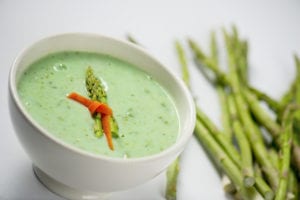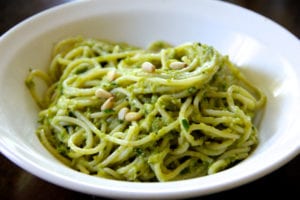Port Jefferson is a walkable, waterfront village that attracts members of its own community and neighboring ones regularly, especially when the weather improves and schools are closed. In theory it should be an optimal environment for business owners thirsty for more foot traffic on Main Street, but at least one is not enjoying the influx of customers.

Ivan Albert is the owner of two shops on Main Street in Port Jefferson Village: Ralph’s Italian Ices & Ice Cream, and Sweet ‘n’ Savory, a café that specializes in gourmet crepes. He said throughout the course of the last year an ongoing situation has developed in the two stores involving a group of about 60 teenagers — Albert speculated in an interview at Ralph’s that most of the offenders are 14 or 15 years old — who use profanity, enter and exit the store repeatedly in large groups, are rude to employees and other customers, smoke from vaporizers within the stores, and even occasionally steal items or damage property.
“This year it has gotten really bad,” Albert, a Mount Sinai resident, said. “It just seems like the thing to do is for parents to just pull up and drop their kids off in Port Jeff and say ‘I’ll pick you up at 11 at night or midnight, have fun with your friends.’”
Albert said he has tried to approach the group nicely to convey his message that he believes their behavior is bad for business, but it hasn’t worked.
“They’re having fun with their friends, and I’m good with that, I was once young and having fun with your friends is great,” he said. “When a family comes in with young kids, or any family, looking to have a nice time, they don’t want to hear cursing. And then there’s fighting and throwing stuff and breaking stuff — it’s horrible.”
Albert said he repeatedly has called village code enforcement and the Suffolk County Police Department to complain and report issues. He said he believes the constables in the village “have their hands tied” and aren’t able to make any meaningful changes, and county police often take too long to respond to calls about teenagers causing a nuisance for businesses.
“Out of control — and business people can’t cope with rudeness, vulgarity and profanity,” Port Jefferson Village code chief Wally Tomaszewski said in a text message of the unsupervised teenagers walking the streets most nights that aren’t followed by school days. “My officers do all they can at night to try and control them.”
The SCPD did not respond to a request for comment in time for print.
“It deters people from coming. I feed my family with these businesses.”
— Ivan Albert
An employee at Sweet ‘n’ Savory, a 20-year-old Port Jefferson resident who asked to be identified only as Chris, said he doesn’t feel the kids present a tangible threat, but their presence is bad for business.
“They’re not really dangerous or a threat just because they are so young, they’re just obnoxious,” Chris said. “They light firecrackers outside of the doors, they harass the people that walk by them. It’s annoying for the business because customers don’t like it. They don’t want to be bothered, so some people are just like, ‘Well if this is how it is I’m not coming back here.’”
Albert said he’s gotten complaints from the parents of his employees, who tend to be in the 17- to 25-year-old range, about the environment their kids are forced to work in. He said his wife tried to spread the message to parents in the area by posting on Facebook about the problem last week, while many of the local schools were on spring break.
“I would just like to reach out as a mom above and before being anything else,” the post said. “There is an extremely large group of kids high school age that hang out around Main Street in Port Jeff. If you are allowing your sons and daughters to spend their free time roaming the streets there I would like to inform you about what goes on. They are totally disruptive, rude, obnoxious and out of control.”
Albert said the post was shared several times, and his plan is to record more incidents on his cellphone and post them on social media going forward in the hopes that parents might see it and lay down the law with their own children.
“The kids aren’t going to stop on their own. I need to bring awareness to the parent that’s dropping them off,” he said. “It deters people from coming. I feed my family with these businesses.”



















 YIELD: Makes 4 to 6 servings
YIELD: Makes 4 to 6 servings



